Este post também está disponível em:
Português
English

Aracaju was built to be the capital of the then province, replacing São Cristovão and founded in 1855.
Aracaju means cashew tree of the parrots, a word composed of the elements: ará = parrot and acayú = fruit of the cashew tree. This interpretation is widely used, although there are other versions.
The capital of Sergipe was born on the hill of Santo Antônio, in the north.
From there, you can enjoy one of the most beautiful spectacles of nature: the meeting of the Sergipe River with the Atlantic Ocean. The panoramic view is enchanting.
The center of Aracaju, totally revitalized, offers options for leisure and history. Examples are the Thales Ferraz and Antônio Franco Markets and the Emperor’s Bridge, as well as clean and landscaped streets, impeccable urban planning and plenty of security.
Aracaju is the capital of Sergipe and lies on the banks of the Sergipe River and has about 30 kilometers of beaches with warm and calm waters.
In the center of Aracaju, which has the Fausto Cardoso square as a reference, are concentrated the main historical monuments of the city, among them the Olímpio Campos Palace (1863), former seat of government.
One of the attractions outside this region is the hill of Santo António, Aracaju’s first urban agglomeration; from the top you can see the estuary of the river that gives the state its name and practically the entire capital.
The new Atalaia waterfront in Aracaju also needs to be visited.
It is about 4 kilometers with varied leisure options, including stalls, bars and restaurants that move the nightlife. Don’t miss the Municipal Market and other craft shops.
In June, the Forró Caju, a thirteen-day festival that attracts thousands of people, takes place in the Hilton Lopes square.
At the same time in Aracaju, the traditional São João festivities take place in Estancia, a town 70 kilometers from the capital.
From Aracaju, you can reach the best beaches in the state on day trips.
Videos about Aracaju SE


Aracaju - Guia Turismo

Praias de Aracaju - Guia de Turismo
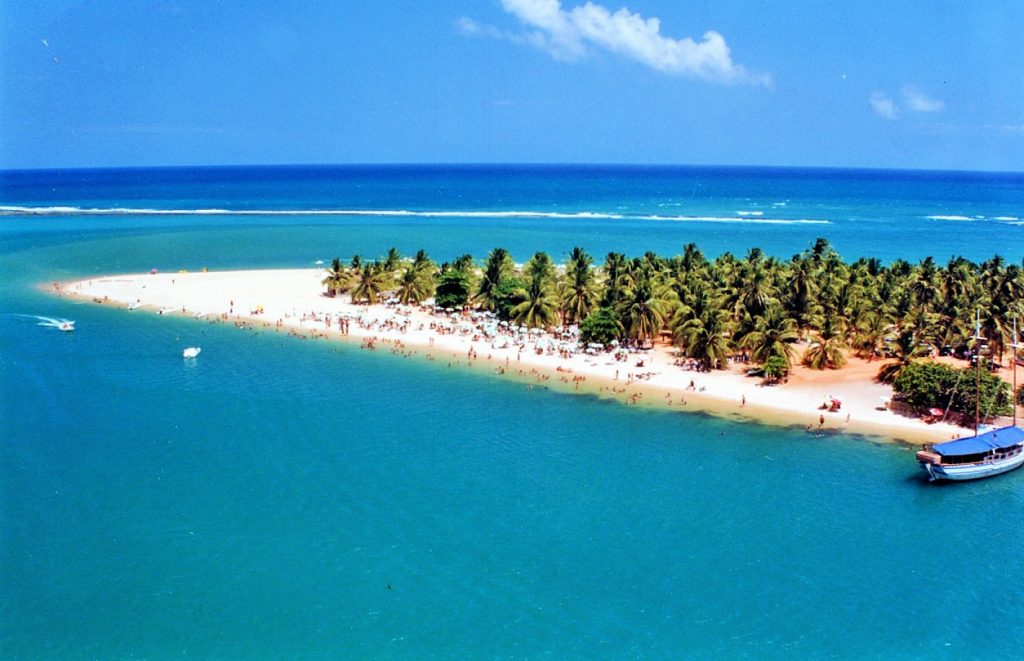
Aracaju - Praias03:12
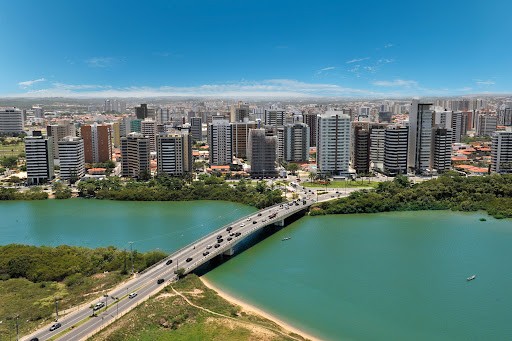
Pontos Turísticos de Aracaju
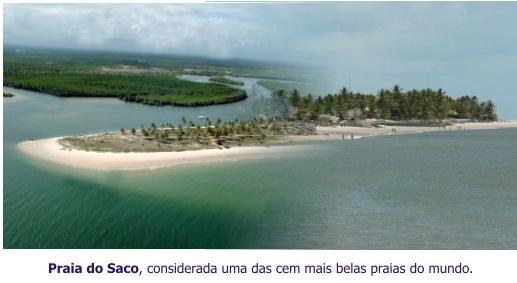
Praia do Saco em Sergipe04:13
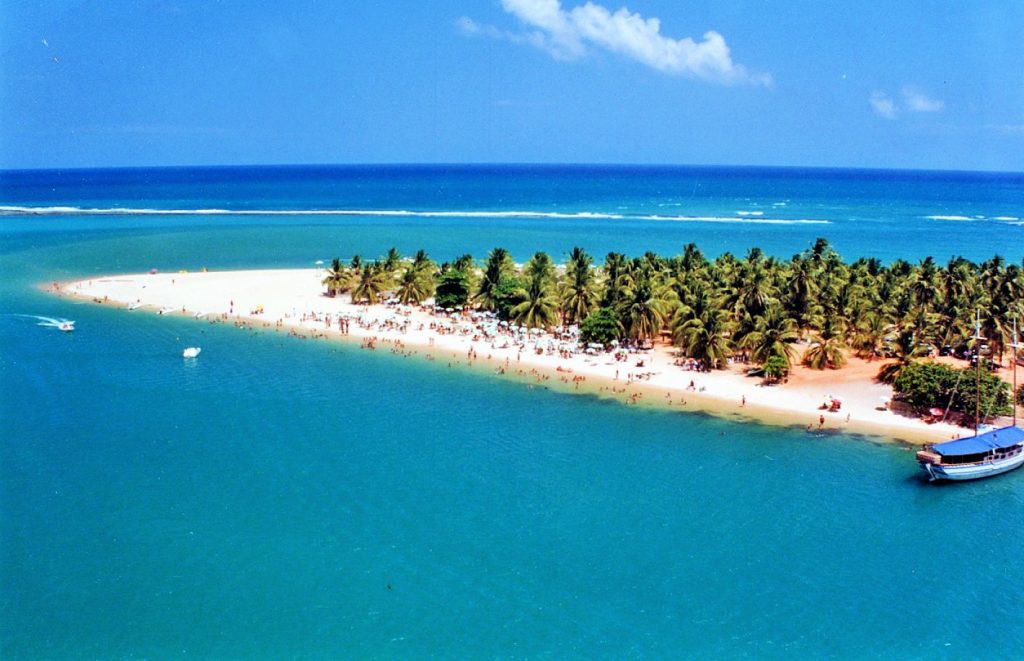
Mangue Seco e Praia do Saco03:18
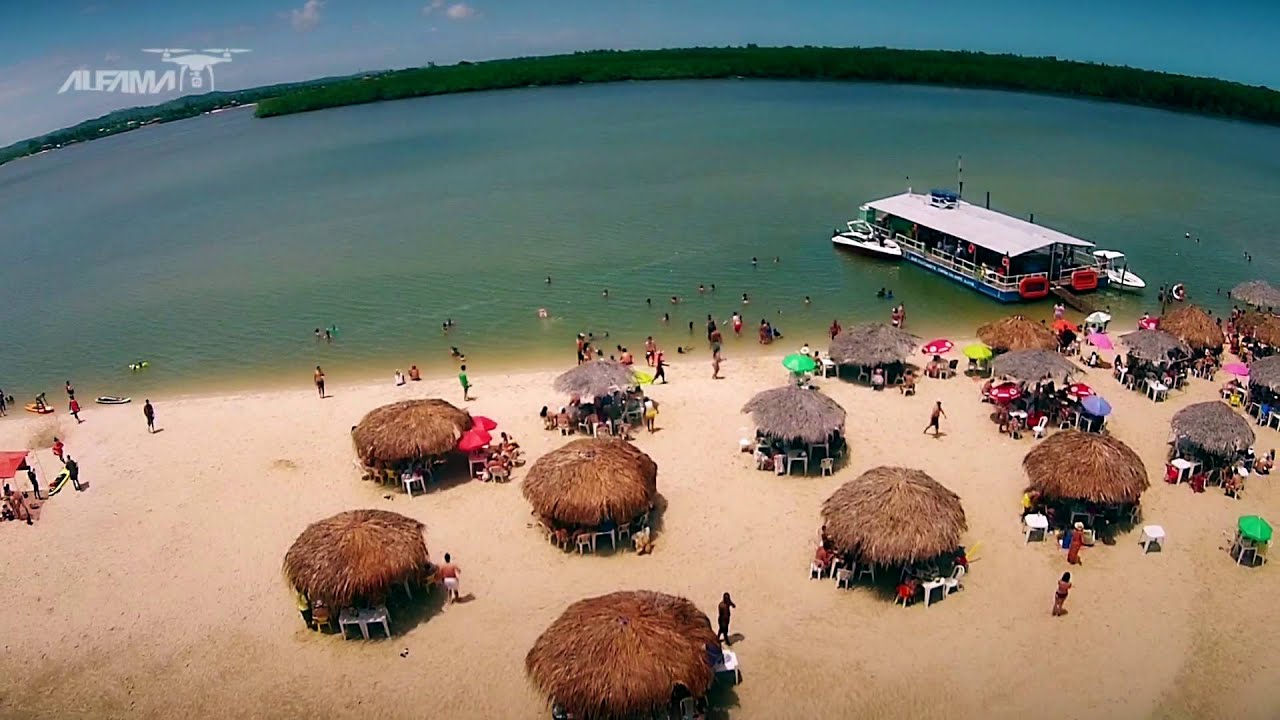
Ilha Croa do Goré - Drone02:54

Ilha Croa do Goré - Drone02:54
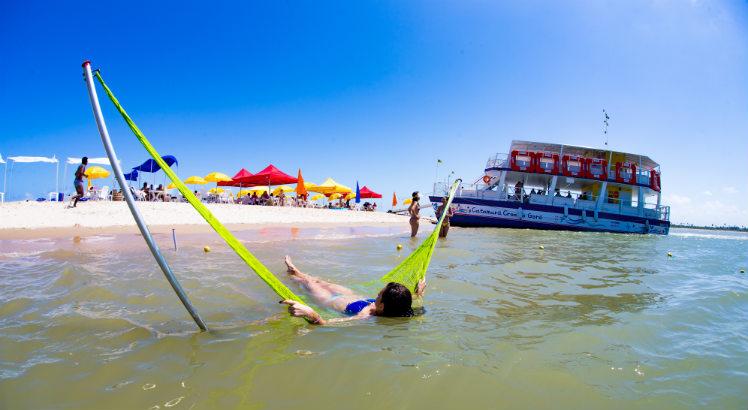
Ilha dos Namorados em Aracaju
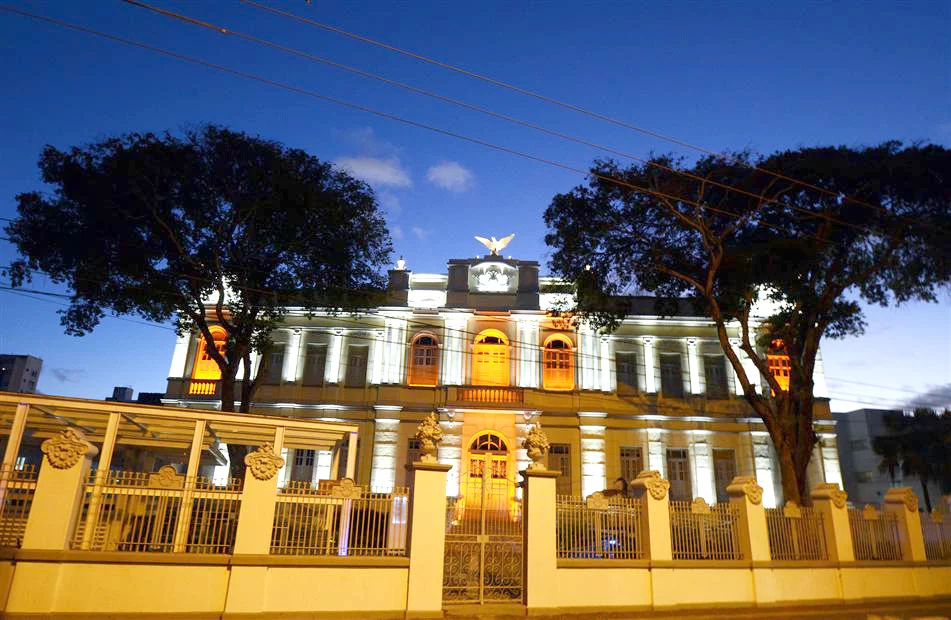
Museu da Gente Sergipana25:49
Beaches of Aracaju
The coastline of Aracaju has approximately 35 kilometers of coastline, with flat and firm sands, perfect for walking; warm and shallow waters, great for swimming; as well as structured bars and restaurants.
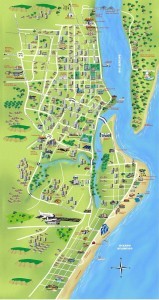
The integrated public transportation system in Aracaju allows easy access to all of them. The beaches of: Atalaia, Aruana, Robalo, Náufragos, Refúgio and Mosqueiro.
The most popular is the Atalaia Beach, whose beautiful and urbanized waterfront has a sidewalk with coconut trees, bike path, sports courts, playground, community center, events square and information points for tourists.
With a wide strip of sand, it is a nice beach and suitable for swimming throughout its length. Next comes Aruana beach, where you will find the always lively Passarela do Caranguejo, a stretch full of restaurants and stalls specializing in this crustacean.
On the waterfront is also the Aracaju Oceanarium, maintained by the Tamar Project. Inaugurated in 2002, it occupies a building of 1100 square meters in the shape of a turtle.
There are eighteen aquariums and two tanks, with turtles, fish and seahorses, a total of sixty freshwater species – brought from the São Francisco River – and saltwater, from the region. There is also a restaurant, bar and an auditorium with forty seats.
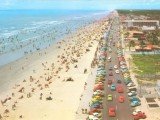
The base of the Tamar Project in Sergipe is located on Pirambu beach, 30 kilometers from Aracaju. It is necessary to schedule visits in advance by telephone.
1. Atalaia Beach
The most famous Atalaia Beach among Aracaju residents can also be an excellent choice for visitors. With a long strip of sand, it has few tents, favoring the family atmosphere and sea bathing, as well as flirting.
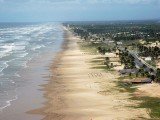
The Atalaia waterfront is six kilometers long and has a great structure with bars and restaurants, parks and squares to enjoy besides the beach.
2. Aruana Beach
Just 5 minutes by car from Atalaia Beach, Aruana Beach is the right place for those looking for tranquility. Blue and warm waters, this is what you will find when taking a sea bath in Aruana.
The place is also great for those who want to enjoy the gastronomy of Sergipe since its various kiosks are well known for offering delicious and well-served dishes.
If you are looking for a nightlife, Aruana Beach is the right choice. It is there that one of the main concert halls of the city is located.
3. Praia dos Náufragos
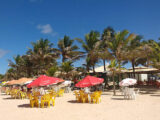
Praia dos Náufragos gets its name from being the place where, during the Second World War, ships bombed off the coast of Recife reached with their last strength.
The bodies of wounded sailors were found in this place, named in memory of the fact.
Without stones, it has a rough sea, but allows bathing without worrying about drowning. Great for playing soccer due to the hardened sands.
4. Robalo Beach
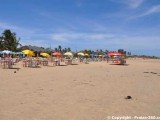
Distant 12 kilometers from the center of Aracaju, Praia do Robalo is quite frequented by surfers. In addition, families love the place because the extensive strip of sand allows children to enjoy the place a lot.
The structure is not the best, but it is worth the visit. Thus, you can take the opportunity to visit it on the same day you visit Praia dos Naufrágos or Refúgio.
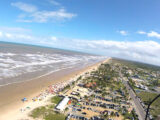
5. Mosqueiro Beach
Praia do Mosqueiro is the last beach before the mouth of the river Vaza-Barris. The distance from the city and the tranquility are ideal for those who want to surf or simply go to the beach without being disturbed.
In the fishing village, there are options for river walks, such as Croa do Goré, or the beginning of the route to Mangue Seco (BA), much requested by tourists from all over Brazil.
6. Waterfront of the Industrial District

On the banks of the Sergipe River, in the north of the capital, the waterfront of Bairro Industrial is one of Aracaju’s new tourist attractions. It is equipped with a bike path, boardwalk, playground, craft center, bars and restaurants, which offer excellent dishes of Sergipe cuisine, such as fish and shrimp moqueca.
The island of Santa Luzia with its beautiful coconut grove, the fishermen’s canoes with their colorful sails in the wind, the waters of the Sergipe River and the breeze that blows refreshing the summer days invite you to stroll through this beautiful landscape.
7. Praia do Saco Beach
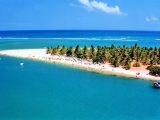
One of the most beautiful beaches on the south coast of Sergipe is Saco beach.
In addition to tranquility, it offers tourists a greenish sea, the mouth of the Rio Real and the dunes that divide the two.
The coconut trees and the fine white sands also make the landscape unique and stunning.
Praia do Saco is 76 kilometers from Aracaju.
8. Refúgio Beach
As it is not one of the most visited beaches in Aracaju, you will certainly find a quiet place when you visit Refúgio.
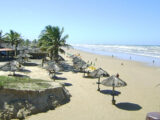
The sea can be quite rough attracting surfers, but in general, the waters are calm and have a pleasant temperature.
9. Praia dos Artistas
Praia dos Artistas is famous, but not necessarily for its beauty, infrastructure or location, the fame is due to the fact that this is one of the most dangerous beaches in the country!
As soon as you enter the sea, you can feel the strong current and just a few steps to come across a channel that is more than 5 meters deep.
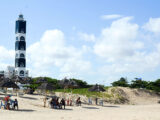
Tourist Spots of Aracajú SE
1. Crôa do Goré Island
Crôa do Goré is a small island of white sand appears with the movement of the tide. Located in the river Vaza-Barris, between the municipalities of Aracaju,
São Cristóvão and Itaporanga d’Ajuda, Crôa do Goré is one of the attractions of the region south of Aracaju.
Access is via Mosqueiro beach, a fishing village, from where speedboats, boats or catamarans depart on 10 to 15-minute trips that reveal native mangroves, small river islands and preserved vegetation.
There is a lot of activity on weekends due to the floating bars and the rustic tents made of sapé that serve fried fish, shrimp pastries and oyster, sururu, bean and aratu stews…
2. Ilha dos Namorados in Aracaju
After the stop at Crôa do Goré, the catamaran continues for another half hour approximately, passing near mangroves, until it reaches Ilha dos Namorados, a large island formed between the Vaza Barris River and the Atlantic Ocean.
The island has a structure prepared to serve snacks and drinks, as well as offering tables with parasols and attractions for children, such as large inflatable buoys.
3. Oceanarium of Aracaju
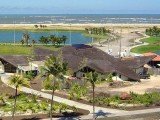
Oceanário de Aracaju is installed on the edge of Atalaia and in the shape of a turtle, the Oceanarium houses 20 aquariums that show the diversity of the flora and fauna of Sergipe. Several species of fish, turtles and other marine animals attract children and adults. Visitors are monitored by biologists from the Tamar Project, who manage the unit.
One of the highlights of this tourist attraction is the ocean tank with 150 thousand liters of water, which reproduces the environment of the seabed on the Sergipe coast. Stingrays, groupers and nurse sharks can be seen up close.
An underwater camera installed on Petrobras’ Camurim-09 platform allows you to observe the Atlantic waters in real time. The Aracaju Oceanarium is the first in the Northeast and the fifth in the country, occupying 1,100 m2 of built area.
4. Memorial of Sergipe
The 6,000 pieces of this museum, distributed in thirteen rooms, illustrate the socio-cultural history of Sergipe.
Created in 1994 by Tiradentes University (Unit), the Sergipe Memorial occupies a house located in the Treze de Julho neighborhood, near the city center. The first environments reveal the chronology of the historical facts of the state; in the sequence, there are objects of craftsmanship, folklore and sacred images.
Don’t miss the pieces that belonged to Lampião’s group and the weapons used by the policemen who killed him – in Grota do Angico, in the interior of Sergipe, in 1938.
In the Rosa Moreira Faria room are the works of this artist who painted the history of the state on porcelain.
The visit, monitored by Unit interns, lasts about an hour. Av. Beira-Mar, 626, 13 de Julho.
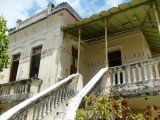
5. Museu do Homem Sergipano
Museu do Homem Sergipano foi fundado em 1996, guarda peҫas arqueológicas, documentos e fotografias. Mantido pela Universidade Federal de Sergipe, funciona num sobrado do inicio do seculo XX, no centro da cidade.
Além da exposiҫão permanente, o museu abriga amostras temporárias e uma biblioteca . As visitas monitoradas podem ser agendadas para os fins de semana. Rua Estancia, 228, Centro.
6. Centros de Artesanato e Cultura em Aracaju
Os artesãos sergipanos tem notável produҫão de cestaria, bordados e rendas, entre outros trabalhos.
O Museu do Artesanato apresenta grande variedade de peҫas em barro e madeira, alem de diversas lojas que comercializam colchas, toalhas de mesa e roupa feminina (Praҫa Olímpio Campos).
No Mercado Municipal António Franco o visitante encontra peҫas de artesanato de todo o estado (Rua José Prado Franco, s/n).
Para quem procura trabalhos mais sofisticados, a indicaҫão e o Centro de Arte e Cultura de Sergipe, localizado na Orla de Atalaia. Lá fica montada uma mostra expressiva da produҫão artesanal sergipana – e tudo pode ser comprado.
Destaque para o trabalho de José Roberto de Freitas, o Beto Pezão, artista que cria peҫas de barro com pés enormes, e para as microobras de Cicero Alves dos Santos (Av. Santos Dumont, s/n, Orla de Atalaia).
No Complexo Cultural Lourival Batista há uma galeria de arte, além do Memorial do Teatro Sergipano, com fotos antigas de atores do estado (Rua Laranjeiras, 1967, Getúlio Vargas).
7. Museu da Gente Sergipana
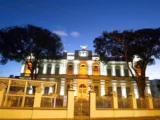
The Sergipana People’s Museum was inaugurated in 2011 and is the first multimedia museum in the North and Northeast regions. Through installations with state-of-the-art technological resources used in the various thematic spaces.
The history of the Sergipana People is exposed in the areas called: “Our Squares”, “Our Goats”, “Our Parties”, “Our Talks”, “Our Fairs”, “Our Dishes”, “Your Cordel”, “Your Repente”, “Our Costumes”, “Our Roças”, “Our Landmarks”, “Our Stories”, “Our Beds” and “Our Little Things”, in addition to temporary exhibitions.
Cultural events such as “Folia da Gente”, “São João da Gente Sergipana”, “August: Month of People’s Cultures”, “Time for Children” and “Christmas of the Sergipana People” are part of the calendar.
Another interesting feature is that the Museum is housed in the historic building of the former Atheneuzinho college, restored by Banese – Sergipe State Bank.
Midiateca
Here, some highlights are explored with terminals where we can navigate throughout the Museum’s spaces. A very cool example is the “Renda do Tempo”, a panel in which the main historical passages of the State of Sergipe appear.
Tips about Aracaju
Start the morning by walking on the flat sands of Atalaia beach. A refreshing dip in the warm Atlantic waters and a tasty coconut water make your day better.
1. Atalaia waterfront
The Orla de Atalaia is a separate attraction. It is worth visiting the Aracaju Oceanarium and getting to know species of fauna from the São Francisco River and the Sergipe coast. Stroll along the boardwalks around the artificial lakes, visit the J. Inácio Art and Culture Center and taste a delicious tapioca beiju.
2. Culinary
Mouth watering? Then head to the beaches of the south coast. Choose a kiosk and, between one dive and another, enjoy the best of Sergipe cuisine: crab, crab, oysters, moquecas, coconut shake and other delights.
3. Historical Center
Visit the Historic Center of Aracaju. In the public markets, the stop is mandatory. There you can taste cashew nuts, curd cheese, homemade sweets and delicious tropical fruits.
Visitors must also visit the Cordel Stall, the talent of the repentistas and the variety of handicrafts from Sergipe, which portray our popular culture.
Still in the Historic Center, walk through the Fausto Cardoso and Olímpio Campos squares, admiring the architectural details of the Metropolitan Cathedral, the Olímpio Campos and Inácio Barbosa Palaces.
4. Mirante da 13 de Julho
Make a stop at the Mirante da 13 de Julho to see the meeting of the Sergipe River with the sea and the extensive mangrove populated by elegant white herons.
5. Industrial Neighborhood Waterfront
Take a stroll along the edge of the Industrial neighborhood, visit the Chica Chaves Craft Center and enjoy the breeze on the banks of the Sergipe River.
6. Santo Antonio Hill
Visit the Hill of St. Anthony, where the famous Church of St. Anthony is located. From the top, you can see the city from a privileged perspective and observe the streets and blocks arranged in a board format, as idealized by the engineer Sebastião Basílio Pirro, who coordinated the planning of the city’s foundation.
7. Mosqueiro village
The light of dusk brushes the sky with shades ranging from pink to red. From the village of Mosqueiro, you can see the last rays of the sun shining on the waters of the Vaza Barris River.
8. Augusto Franco Park
Another option is to stroll with family and friends in the Augusto Franco Park (Sementeira). There, visitors will find a lake with pedal boats, a children’s playground, walking trails, a vegetable garden, kiosks, etc.
9. Passarela do Caranguejo
At night, the Passarela do Caranguejo, on the edge of Atalaia, bustles with the movement of bars and restaurants, which in addition to delicious food and drinks, offer live music. Forró pé-de-serra is one of the main attractions.
PARKS AND CHURCHES IN ARACAJU
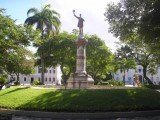
1. PRAÇA FAUSTO CARDOSO
One of the city’s tourist attractions is Fausto Cardoso Square, the oldest in the capital. Initially called Praça do Palácio, in reference to the Olímpio Campos Palace, former seat of the state government, it received its current name in honor of the political leader, who died in the square in 1906. Location: Center.
2. PRAÇA OLÍMPIO CAMPOS
Praça Olímpio Campos is located in the heart of the city, houses the Metropolitan Cathedral and the Álvaro Santos Art Gallery. From Monday to Friday, a craft fair and typical foods take place in the square. Location: Center.
4. PRAÇA TOBIAS BARRETO
Praça Tobias Barreto is located in the São José neighborhood, the square is a cozy place and very beautiful. On Sundays, it happens Freguesia Project, with craft fair, typical foods and musical performances. Location: São José neighborhood.
5. CALÇADÃO DA 13 DE JULHO
The 13 de Julho sidewalk is one of the busiest areas of the capital. Frequented by people of all ages to relax, do jogging and hiking in the early morning, late afternoon and evening.
The promenade has a belvedere, inaugurated in September 1998, where cultural events take place and from the tower you can see a panoramic view of part of the city. The promenade also has a sports court, children’s playground, kiosks, health and police stations. Location: Av. Beira Mar – Bairro 13 de Julho
6. PARK GOVERNADOR AUGUSTO FRANCO
Parque Governador Augusto Franco is located in a prime area of the city, in the Jardins neighborhood, the park Governados Augusto Franco, better known as Parque da Sementeira, has a large green area, Ecological Forest and Farmácia Viva, which sells natural products.
There you can have fun with the pedal boats, playing soccer, hiking, picnics and cycling. Location: Av. Dep. Sílvio Teixeira, s/n – Jardins. It is open daily from 6am to 6pm.
7. ARACAJU CITY PARK
Parque da Cidade is located in Bairro Industrial, north of the capital, and still houses remnants of the Atlantic Forest. It is possible to have fun with the mini-zoo on site, walk, ride a bike and enjoy the fresh air that nature offers.
On the cable car ride you can admire the park area.
8. PARQUE DOS CAJUEIROS
Parque dos Cajueiros is located on Avenida Beira Mar, in the south zone, and has a green area, soccer and tennis courts. For those who like to relax, the park has a restaurant, which operates on the banks of the Poxim River.
9. NOSSA SENHORA DA CONCEIÇÃO METROPOLITAN CATHEDRAL
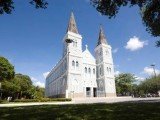
Metropolitan Cathedral Nossa Senhora da Conceição is located at Praça Olímpio Campos, s/n – Centro. Tel: (79) 3214-1539/3418
10. CHURCH OF SANTO ANTÔNIO
Church of Santo Antonio is located at Praça de Siqueira de Menezes, s/n, in a place known as Colina do Santo Antônio – Bairro Santo Antônio. Tel: (79) 3236-1864
11. IGREJA SÃO JOSÉ
São José Church is located at Praça Tobias Barreto, s/n – Bairro São José. Tel: (79) 3214-2463
12. SÃO SALVADOR CHURCH
São Salvador Church is located on the sidewalk of Laranjeiras Street, s / n – Center.
13. SÃO JUDAS TADEU CHURCH
São Judas Tadeu Church is located at Mexico Street, s/n – Bairro América.
HISTORY OF ARACAJU
Aracaju was born in 1855, already with urban planning, as it was built to house the capital of the Province, until then located in São Cristóvão.
The transfer took place on the initiative of the then provincial president Inácio Joaquim Barbosa, because São Cristóvão did not offer the indispensable conditions for an administrative headquarters.
Sugar is also responsible for the transfer of the capital of the Province of São Cristóvão, considering that the Vaza-Barris was difficult to navigate due to the amount of sand banks.
Thus, the transfer to Aracaju occurs, which at that time was “[…] just a small fishing village, […] strategically close to the port, on the banks of the Sergipe River, from where the production of ‘white gold’ flowed directly to Europe”;
The sugar mills, in addition to being one of the largest responsible for the profits of the captaincy of Sergipe.
The sugar mill owners of the Cotinguiba Valley, the largest sugar producing region of the province, demanded the change, because Aracaju was by the sea, facilitating the transportation of sugar.
Its construction was an engineering challenge, given its location in an area dominated by swamps and marshes.
The city’s urban design was drawn up by a committee of engineers, with Sebastião Basílio Pirro as the engineer in charge.
Until then, cities had adapted to natural topographical conditions, creating an irregular urban landscape.
The engineer Pirro countered this irregularity and Aracaju was one of the first cities in Brazil to have this geometric trend.
The center of political-administrative power (now Fausto Cardoso Square) was the starting point for the growth of the city.
All the streets were arranged geometrically, like a chessboard, all directed to the banks of the Sergipe River.
BARS IN ARACAJU
1. CULTURAL BARRACÃO
Forró do Candeeiro
Friday and Saturday, from 10:30 pm – Sunday, from 10 am.
Located at Rodovia José Sarney, s/n – Aruana Beach.
Phone: (79) 9977-5980 / 9964-4962
2. BEER HOUSE
Music for dancing
Friday and Saturday
Av. Santos Dumont, s/n – Orla de Atalaia (Kiosk 6)
3. BRANDYS
Av. Acrisio Cruz, 110 – Salgado Filho. Tel: (79) 3246-1657
4. CASA DE FORRÓ CARIRI
From Wednesday to Saturday, from 22h / Sunday, from 19h.
Av. Santos Dumont, 530 – Passarela do Caranguejo. Tel: (79) 3243-1379/5370
5. CHOPP 13
Av. Beira Mar, 984 – Atalaia – 3246-2862
6. FERREIRO CAFÉ BOTECO
Av. Min. Geraldo Barreto Sobral, 215/lj 91 – Shopping Jardins – 3217-5971
7. SAN CHOPPANÇA
Live music
Friday from 6pm to 10pm
Av. Beira Mar, 282 (in front of the coconut park) Tel: (79) 3243-1180
8. TEIMONDE
Live music
Thursday from 10pm, Happy Hour: Friday from 8pm
Av. Santos Dumont, 650 – Orla de Atalaia Tel: (79) 3223-1625
9. ALQUIMIA (GLS)
Friday, Saturday and Sunday, from 19h.
Rua Niceu Dantas – Atalaia Tel: (79) 9991-5909
BOATES
1. LIVE
Thursday to Saturday, from 22h
Av. Desembargador João Bosco Lima, 1276 – Atalaia Tel: (79) 3243-3655
2. BOATE TEIMONDE UP
Friday and Saturday, from 22h
Av. Santos Dumont, 650/ 2nd Floor – Orla de Atalaia Tel: 3223-1625
3. BOATE AVALON (GLS)
Saturday, from 23h
Av. Beira Mar, 216, 13 de Julho
4. BOATE COLOSSEO
Thursday and Saturday, from 22h
Beira Mar Avenue – Atalaia
Tourism and Travel Guide of Acaraju Sergipe



















